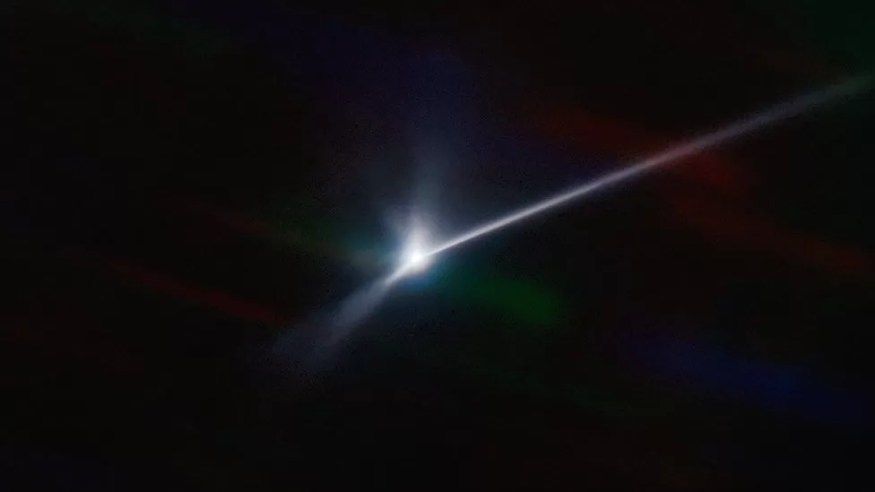The Double Asteroid Redirection Test (DART), NASA's first planetary defense test project, aims to simulate and evaluate a way to defend Earth in the event of an asteroid impact danger. This DART mission successfully changed an asteroid's orbit by kinetic impact, specifically by slamming a spacecraft into the smaller component of the binary asteroid system Didymos, which is Dimorphos, according to DART themselves.
Another recent image indicates that an asteroid intentionally hit by NASA's DART Mission probe has left a debris path reaching thousands of kilometers. A telescope caught the comet-like jet extending behind the big rock in Chile.
The other week, the spacecraft was destroyed to see if asteroids that may threaten Earth could be pushed out of the path. Scientists are investigating if the test was successful and whether the asteroid's route was altered. The incredible image was captured two days after the collision by scientists in Chile using the Southern Astrophysical Research Telescope (SOAR).
Studying The Wreckage of DART Mission
"It's astonishing how vividly we were able to record the structure and extent of the wreckage in the days that followed the impact," Teddy Kareta, an astronomer who contributed to the observation, said in a report from Yahoo News.
According to Michael Knight of the US Naval Research Laboratory, that debris trail would just be studied in the next weeks and months. The DART mission cost $325 million (£240 million), and the probe was deliberately slammed into the asteroid, killing it. It will be many weeks before scientists know whether their research was successful.
Meanwhile, Doctor Lori Glaze, NASA's head of planetary science, was sure that the mission had accomplished something exceptional. Astronomers will evaluate whether the expedition was accomplished by looking at the difference in Dimorphos' orbit around another asteroid called Didymos. Earth-based telescopes will provide accurate measurements of the two-rock, or binary, system. As per mission leader Dr. Andy Rivkin, it must have been meant to accomplish "just what it says on the tin," a report from BBC News.

A trail of debris from the asteroid struck by a NASA spacecraft can be seen stretching thousands of kilometers
NASA's DART Mission 'In a Nutshell
From their official press release, the DART Mission claimed that their investigating team plans to employ ground-based telescopes to determine if DART's collision changed the asteroid's orbit around Didymos. The collision is anticipated to shorten Dimorphos' orbit by around 1%, or about 10 minutes; accurately determining how significantly the asteroid has deviated will be one of the key goals of such a full-scale test.
The spacecraft's sole instrument, the Didymos Reconnaissance and Asteroid Camera for Optical Navigation (DRACO), along with advanced assistance, navigation, and regulation system that operate in tandem with Small-body Maneuvering Autonomous Real-Time Navigation (SMART Nav) methods, empowered DART to recognize and differentiate in between two asteroids, targeting the smaller body.
In a report from Science Times, NASA's James Webb and Hubble Space Telescopes obtained footage of the Double Asteroid Redirection Test (DART) mission crashing with Dimorphos on Monday last week.
On September 26, Dimorphos, an asteroid moonlet in Didymos and DART, collided on purpose. It marked the first time the kinematic change mitigation strategy, which requires deploying a spacecraft to deflect an asteroid that does not menace Earth and adjust its trajectory, has ever been performed.
RELATED ARTICLE: NASA's DART Successfully Completes First Planetary Defense Test; Images of the Spacecraft's Asteroid Crash Revealed
Check out more news and information on Space in Science Times.
© 2026 ScienceTimes.com All rights reserved. Do not reproduce without permission. The window to the world of Science Times.












